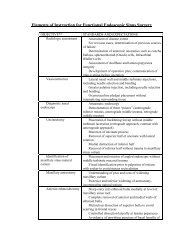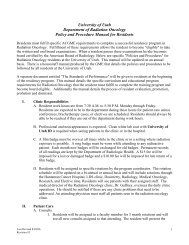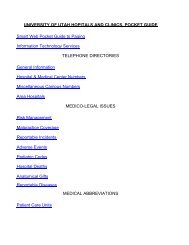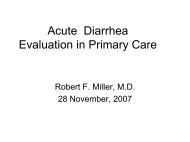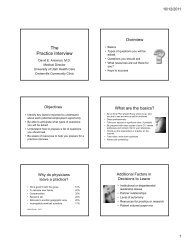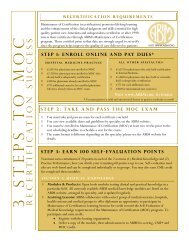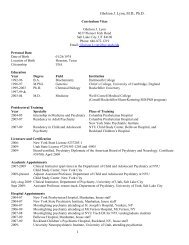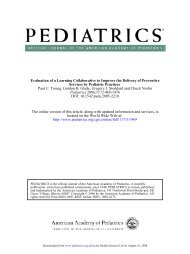Motivational Interviewing Ratings: Higher and Lower Skill Levels
Motivational Interviewing Ratings: Higher and Lower Skill Levels
Motivational Interviewing Ratings: Higher and Lower Skill Levels
Create successful ePaper yourself
Turn your PDF publications into a flip-book with our unique Google optimized e-Paper software.
LOWER:<br />
The disease concept of addiction, powerlessness, or loss of control is merely mention (even<br />
repeatedly) without really explaining what these principles mean or the implications of them for the<br />
client.<br />
The presentation of the concepts of powerlessness or loss of control sounds mechanical, rigid <strong>and</strong><br />
untied to the nature <strong>and</strong> circumstances of the client’s substance use problem.<br />
ASSERTING AUTHORITY: To what extent did you verbalize clear conclusions or decisions about what<br />
course of counseling would be best for the client? How much did you warn that recovery would be impeded<br />
unless the client followed certain steps or guidelines in treatment? To what extent did you try to lecture the<br />
client about “what works” about treatment or the likelihood of poor outcome if the client tried to do his/her<br />
own treatment? To what extent did you refer to his or her own experiences, knowledge, <strong>and</strong> expertise to<br />
highlight the points made to the client?<br />
HIGHER:<br />
Provide directives <strong>and</strong> recommendations with confidence <strong>and</strong> clarity.<br />
Reference scientific knowledge base, clinical experience, or personal recovery to fortify therapeutic<br />
authority during the session <strong>and</strong> to underscore the need for the client to follow your directions.<br />
More prescriptive tone aims to promote the client’s compliance with your recommendations <strong>and</strong><br />
improve the client’s treatment outcomes rather than merely to assert power <strong>and</strong> control over the client.<br />
LOWER:<br />
Assertion of authority is softened by seeking the client’s input, guidance, or approval for what was<br />
said.<br />
The initially prescriptive tone yields to a collaborative one.<br />
The client has excessive input into the development of the treatment plan, despite the client’s<br />
potentially poor judgment about what might be best for him or her.<br />
CLOSED-ENDED QUESTIONS: To what extent did you ask questions that could be answered with a yes<br />
or no response or that sought after specific details or information from the client?<br />
HIGHER:<br />
Closed-ended questions pull the client to answer the question specifically asked rather than giving the<br />
client leeway to elaborate on a topic or area.<br />
They occur in close succession as they follow-up on one another.<br />
When performed well, closed-ended questions establish that you are in control of the session <strong>and</strong> in<br />
the role of the expert trying to discern information important for clinical assessment/evaluation <strong>and</strong><br />
treatment.<br />
Are very clear <strong>and</strong> direct; thereby minimizing any confusion a client may have about what you has<br />
asked <strong>and</strong> wants to know.<br />
LOWER:<br />
Overly complex due to asking the client several matters in one question or stringing together many<br />
closed-ended questions before permitting the client to answer them.<br />
The specificity of the client’s answer may be lost in the client’s inability to recall the question or in<br />
considering what part of the question to answer first.<br />
8 | P a g e



